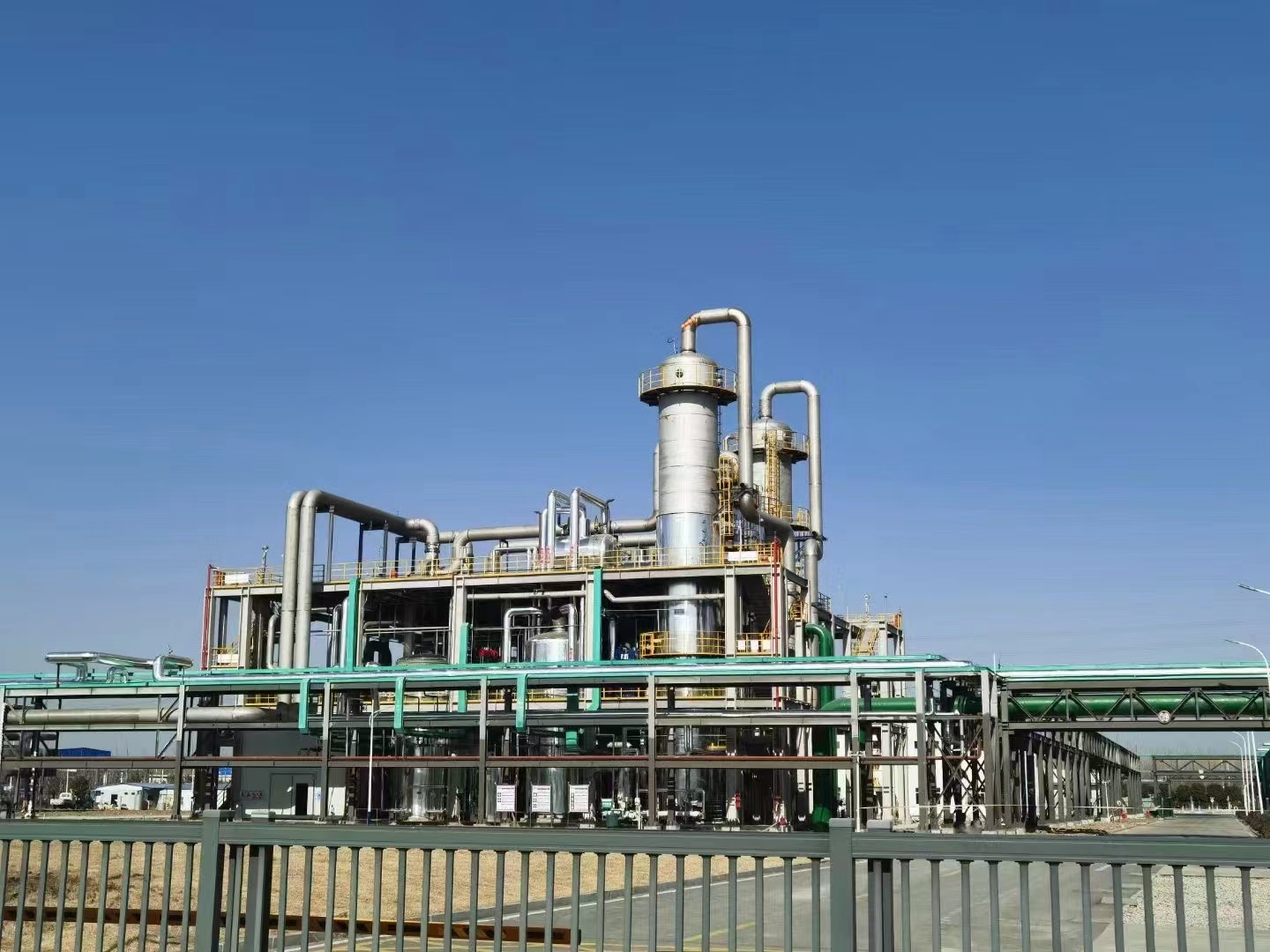Monoethylene glycol (MEG) is a key raw material used to manufacture polyethylene terephthalate (PET) fibers:
PET Production Process
The basic raw materials in PET, pure terephthalic acid (PTA) and monoethylene glycol (MEG), are chemically reacted with a small amount of co-monomers via a “polycondensation” process to form a base polymer. The resulting polymer is a polyester that is commonly used to make films and fibers.
What is MEG (Monoethylene Glycol)?
MEG (Monoethylene Glycol) is a chemical that is used in many industrial applications, including the production of polyester fibers and PET resins. It is also used as a coolant, heat transfer agent, antifreeze, and a hydrate inhibitor in gas pipelines.
Key Properties of MEG:
- Boiling Point: 197.3°C (387.1°F)
- Freezing Point: -12.9°C (8.8°F)
- Miscibility: Fully miscible with water, making it useful in various aqueous solutions.
MEG has a wide range of applications, including its use as an antifreeze in automotive coolants, a heat transfer fluid, and a hydrate inhibitor in gas pipelines. However, one of its most important uses is in the production of PET, where it plays an essential role in creating the polymer backbone for plastics and fibers.

How is MEG Used to Make PET Fibers?
Polyethylene terephthalate (PET) is a thermoplastic polymer used extensively in the textile and packaging industries. MEG is one of the two primary raw materials required to produce PET, the other being terephthalic acid (PTA) or its derivative, dimethyl terephthalate (DMT).
The PET Production Process:
1. Transesterification Reaction: In this process, MEG is reacted with dimethyl terephthalate (DMT) in the presence of a catalyst. This reaction produces two by-products: methanol and the polyester precursor. Methanol is recovered through a methanol recovery system, which is an important step for both environmental and economic reasons.
2. Polycondensation: After the transesterification stage, the product undergoes a polycondensation reaction, where the intermediate compounds are transformed into long-chain PET polymers. During this process, water is released as a by-product.
3. Solid-State Polymerization (SSP): This step is typically used to further increase the molecular weight of PET, enhancing its strength and durability. This is important for applications such as plastic bottles, where high mechanical properties are required.
Role of MEG in PET Production:
MEG acts as a diol in the reaction, bonding with DMT or PTA to form long polymer chains. Its ability to combine with these materials is essential to creating the strong, durable PET fibers and resins used in a wide range of products. The final PET material is shaped into products like polyester fibers for textiles or PET bottles for packaging.
What is PET Used For?
PET is one of the most versatile plastics in the world, with applications in both the textile and packaging industries. Some of the most common uses of PET include:
1. Polyester Fibers for Textiles
Polyester fibers, made from PET, are widely used in the textile industry to manufacture clothing, upholstery, and other fabric-based products. These fibers are durable, resistant to wrinkles, and quick-drying, making them a popular choice for fashion and home textiles.
2. PET Bottles and Packaging
PET is also extensively used in the packaging industry, particularly for making plastic bottles. It is the primary material used to manufacture beverage bottles for products like water, soft drinks, and juices. PET’s excellent barrier properties help preserve the contents of these containers, ensuring long shelf life and maintaining product quality.
3. Food Packaging
In addition to bottles, PET is used to make food packaging materials, including containers and trays. Its ability to provide a strong, lightweight, and food-safe material makes it ideal for packaging a variety of products, from fresh produce to pre-packaged meals.
4. Industrial Applications
PET is also found in industrial applications such as films and technical fibers used in construction and automotive industries. Its combination of strength, flexibility, and chemical resistance makes it suitable for high-performance industrial applications.
How Does the Purity of MEG Affect the Quality of PET?
The purity of MEG is a critical factor in determining the quality of PET produced. Impurities in MEG can negatively affect the polymerization process, leading to defects in the final PET product.
Impacts of Impure MEG:
- Yellowing of PET: Low-purity MEG can result in PET fibers or resins that have a yellowish tint. This is undesirable, especially in packaging applications where clarity and transparency are essential.
- Weaker Mechanical Properties: Impurities can cause a reduction in the mechanical strength of PET, leading to products that are more prone to breaking or deforming under stress.
- Lower Molecular Weight: Contaminants in MEG can disrupt the polymerization process, resulting in PET with lower molecular weight, which affects its overall durability and performance.
- Reduced Crystallinity: High-quality PET has a specific degree of crystallinity, which impacts its strength and barrier properties. Impurities in MEG can reduce the crystallinity of PET, making it less suitable for applications like packaging.
Importance of High-Purity MEG:
To ensure that PET products meet industry standards, manufacturers must use high-purity MEG. This guarantees the production of clear, strong, and durable PET fibers and resins that can perform reliably in their respective applications.
Conclusion
MEG is a vital chemical in the production of PET, contributing to the creation of durable and versatile polyester fibers and resins. The purity of MEG plays a significant role in determining the quality of PET products, making it crucial for manufacturers to use high-purity materials to produce strong, clear, and reliable products for a wide range of industries.
















